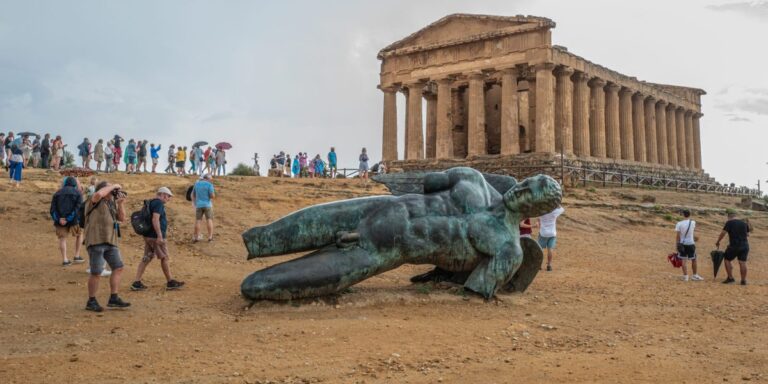The Italian island of Sicily may have a rich history, but the same can’t be said for its water supply.
Located on the southwest coast of Sicily, Agrigento is home to the famous Greek ruins of the Valley of the Temples and the cliffs of Scala dei Turchi, which attract many tourists every year. However, with water shortages looming, the area no longer has the capacity to accommodate tourists.
The city’s ancient sewer system has remained functional for many years, but is now dry.
This has forced local residents to cut water consumption by up to 45 percent for about one million people, CNN reported.
Hotels and guesthouses in Agrigento, which is also struggling with the effects of a severe drought that is threatening to dry up Sicily’s only natural lake, Lake Pergusa, are refusing to let tourists in.
If tourists still visit Agrigento, they’ll probably notice that bed-and-breakfast accommodations are installing filters in showers and sinks as a water-saving measure.
“Today’s problems are the result of 20 years of failed water management policies,” Francesco Picarella, head of Agrigento’s hotel federation, told CNN. “Hotels with their own reserves are managing to make up for it, but B&Bs in the historic center are in an extremely difficult situation.”
Agrigento’s crisis has made water a precious commodity that even locals are struggling to get. Tourism has historically been a key driver for the region, but the dual forces of growing interest amid water scarcity have left Sicilian cities struggling to manage the influx of visitors.
Italy’s unique case
Climate change is a comprehensive phenomenon, but some of the factors that affect Italy are unique: Italy is more vulnerable to hydrogeological risks that affect how rainwater reaches the ground and recharges aquifers; Italy still relies on an agri-food system for around 15% of its GDP, and it is here that extreme weather events will cause the most losses.
Even within Italy, the extent of the damage varies from region to region, with Sardinia and Sicily being the most vulnerable areas.
Sicily has become a center of climate change-related activity after experiencing record heat in 2021. A major olive and citrus growing region, water shortages have hit the local economy as well as tourism. Elsewhere in Italy, dry conditions have led to less snow and an increasingly shorter winter skiing season.
The situation in Italy is indeed affecting the economy and could get worse: a G20 report said the frequency of droughts could increase by 35% by 2050, causing a 3.7% drop in GDP. The Bank of Italy, in a 2022 study, acknowledged the risks facing Italy in the coming decades.

Nicholas Economou—NurPhoto/Getty Images
I have friends who share my feelings about the terrible weather in Italy.
Unfortunately, the same situation as Italy is playing out across Europe: Greek islands like Naxos are also facing climate change, with lakes and reservoirs drying up, irrigation becoming difficult and tourism being threatened.
That coincides with the peak summer season, when tourists flock to soak up the Greek sun, but local authorities are trying hard to limit it.
Similar trends are being seen in parts of Spain, where locals and tourists are fighting over water use. To combat the shortage, hotels are limiting usage to 100 litres per bed per day, while residents try to balance water consumption with sustaining their livelihoods through agriculture.
As climate and travel trends intertwine, one thing is clear: long-standing tourism practices are not sustainable, so how governments and businesses change their approach through a combination of new policies and creativity could determine how people experience Europe’s most beloved destinations.

